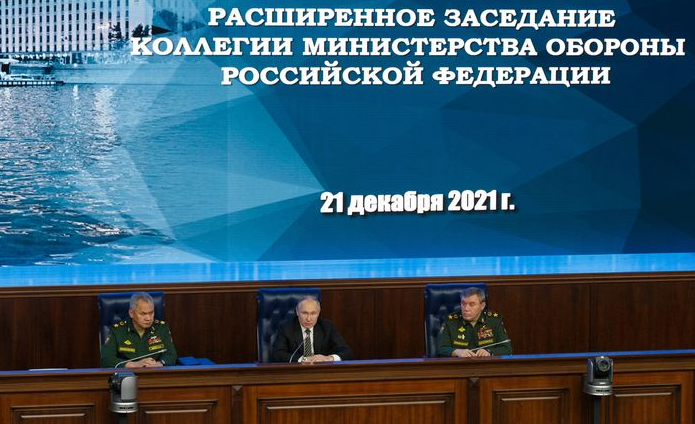Despite Defense Minister Shoygu’s announcement of “higher than planned” pay increases for Russian servicemen in 2022 and 2023, military salaries will still lag woefully behind cumulative consumer inflation amounting to more than 90 percent since 2012.
At the December 22 MOD Collegium, Sergey Shoygu said RF servicemen will get higher than planned pay increases in 2022 and 2023.

Conveniently for him, he didn’t say what the original plan was, so Russian officers and soldiers will simply take what the MOD gives and be grateful.
No one (outside the MOD or RF government) will know if it’s more or not. But on Runet, there are rumors (perhaps hopes) of 4, 5, or even 9 percent. Four one year and 5 the next, who knows?
At the Collegium, Shoygu also reported that a 3.7 percent indexation of military wages occurred in 2021. It was part of the first series of pay raises since 2012.
Announced at the start of 2018, the salary increases were supposed to be delivered in the amounts of 4.3 percent in 2019, 3.8 percent in 2020, and 4 percent in 2021.
So the actual indexation in 2021 turned out to be less than planned.
Recall that those raises didn’t compensate for the military’s eroded purchasing power. The RF’s CPI went up 50 percent between 2012 and 2018. The three indexations covered only about 12 percent of the rise in consumer prices over that period.
With RF inflation at roughly 8 percent this year, overall prices for essentials paid by Russian servicemen are now 90 percent greater than what they were in 2012.

A nice graph of Russian inflation over the past decade by Trading Economics based on Rosstat data.
Speaking to same Collegium, the Supreme CINC of the RF Armed Forces Vladimir Putin stated:
One of the unconditional priorities is increasing the level of social guarantees to servicemen. Defenders of the Motherland are fulfilling special missions, often very complex, responsible, and risky ones and we will aim for them to receive worthy compensation for their service.
As in recent years, the base pay of servicemen should not simply correspond to the level of pay for labor in the leading sectors of the economy, but exceed it — we agreed on this with the government already several years ago.
For reference: this correlation is still preserved. The forecast average level of wages in the economy this year is 55 thousand rubles [per month], the average pay in leading economic sectors, that is oil, finance, transport is 62.2 thousand. According to my data, the Finance Ministry says a little more, in the Defense Ministry the average level of base pay of a serviceman at the rank of “lieutenant” in 2021 is 81.2 thousand rubles. It happens differently, various lieutenants serve differently, but the average level is 81.2 thousand, and, as I said, in leading sectors of the economy 63.2 [thousand].
The government needs to index the base pay of servicemen in a timely manner and in that amount which supports this correspondence and, of course, increase military pensions.

So Putin says, on average, lieutenants are making one-third more than employees in the main sectors of Russia’s economy — roughly 80,000 rubles per month versus 60,000.
Most Russian sources still place the average lieutenant’s base (rank and duty) pay at between 35,000 and 45,000. To get to 80,000, a lot of nadbavki (supplemental pay) are required. There are a large number of them and it’s pretty much completely within a commanding officer’s purview to pay or not pay them. They include many things — work with state secrets, special conditions of service, special combat training, at-sea service, command duties, class qualifications, special achievements, good conduct, service outside the RF, etc.
There are many reported cases of commanders requiring kickbacks from subordinates before authorizing these supplements.

The average Russian lieutenant might be very surprised to find out he’s averaging 80,000 per month.
The apparatus supplying Putin information on the situation in the military must be very interesting. It must assume absolutely no one tracks this stuff over time or compares what’s said today to what was said in the past.
At the time of the 2018-2020 indexations (which actually happened in 2019-2021), MOD finance chief Shevtsova said the average platoon commander was making 66,000 and the average lieutenant colonel almost 89,000. Now we’re supposed to believe an O-3 makes what an O-5 made just a couple years ago. It seems a bit improbable. And, as far back as 2014, she said military pay already exceeded salaries in the oil industry — reported as averaging 62,000 — so oil workers haven’t gotten raises in eight years?!


